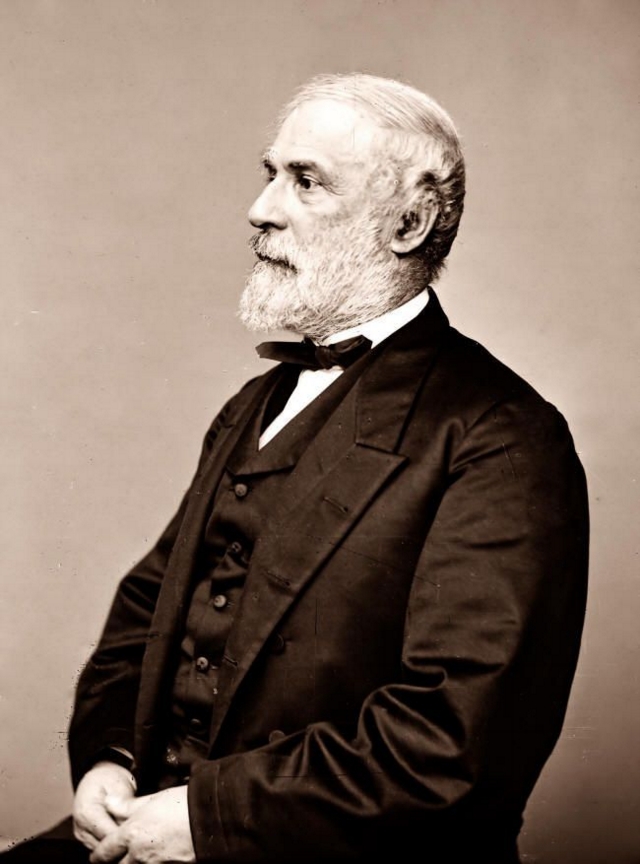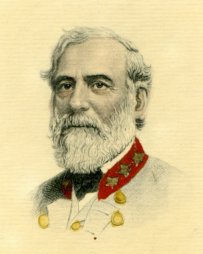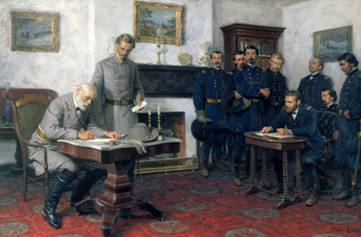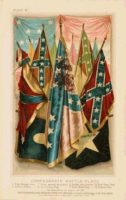 Clearly, Robert E. Lee’s reputation has plummeted from the lofty height it once occupied. It is time to clear a path through the rubble of toppled statues and discarded plaques to examine the qualities of the authentic Lee, as well as the turn of mind that would relegate him to historical ignominy…
Clearly, Robert E. Lee’s reputation has plummeted from the lofty height it once occupied. It is time to clear a path through the rubble of toppled statues and discarded plaques to examine the qualities of the authentic Lee, as well as the turn of mind that would relegate him to historical ignominy…
I.
“What excellence is there in a nature which merely rejoices in its own well-being and does nothing, never has done anything and never will do anything?” ~ Cicero, The Nature of the Gods, Book I
The greatest human heroes, from the beginning of recorded history and lore, all share a common trait: a flaw in character that often proves to be their undoing, and perhaps even leads to their death. There are many examples from antiquity: the fatal arrogance of Achilles; Odysseus’ disastrous taunting of Polyphemus; King David’s lust for Bathsheba; the unquenchable thirst for conquest of Alexander the Great; and the pride of Oedipus and Agamemnon. Taken together, they remind us of an eternal verity: man—especially the man who wears the laurels—is imperfect. In his short biography of Napoleon, Paul Johnson hammers home this point:
We have to learn again the central lesson of history: that all forms of greatness, military and administrative, nation and empire building, are as nothing—indeed they are perilous in the extreme—without a humble and contrite heart.
He added that the integral part of this lesson comes from stripping away the myth surrounding the man so that his reality can be revealed.
Yet the deeds of great men, even after they have been demythologized, remain the stuff of legend. Scenes from the life of David are heard throughout the liturgical year of the Roman Catholic Church. The inspiration we take from the return of Odysseus comes not only from his prevailing over numerous challenges, but from his getting there in spite of his occasional foolishness. Winston Churchill, himself a great bundle of contradictions, perfectly captured this point when he defined success as the ability to go “from failure to failure without loss of enthusiasm.”
As such, man will always be fascinated by stories of human achievement through the ages—both from a sense of wonder, per Cicero, about men who have done something; and perhaps to better understand his own nature. “I much prefer history, true or feigned,” J.R.R. Tolkien wrote, “with its varied applicability to the thought and experience of readers.”
While history and lore are not a substitute for religion, they nonetheless capture the imagination and constitute a treasury from which succeeding generations may borrow liberally. Western civilization could not have been what it was without the existence of The Iliad, The Odyssey, or Thucydides’ chronicles of the Peloponnesian War. Stark Young, writing in I’ll Take My Stand, urged those living in the present to preserve “flowers” of past epochs that possess the “breath and flux of life,” and to defend “what we have drawn not from theory but from an actual civilization, and believe it necessary to remember.”
This concept, however, has proven problematic for modernity, which has chiefly been interested in weeding out all that it deems politically offensive, making judgments purely on the basis of its own nebulous orthodoxy.
The purge of modern society’s undesirable elements, past and present, has become an obsessive current of the day. It has flooded both Europe, where certain nations boast of eradicating births of babies with Down’s Syndrome, and the United States, where supposedly normal children browbeat their teachers into censoring history and placing artificial limitations on political discourse. A recent object of social justice activists’ opprobrium is Robert E. Lee. Even before the Charlottesville riots of 2017, he had become the symbol of white supremacy and America’s slaveholding past. In the wake of that ugly event, however, there has been a headlong rush to eradicate any trace of his memory.
Lee’s image and name have been removed from countless public places across the country, including those that have a direct tie to his life. Washington & Lee University put measures in place to sanitize its chapel—an edifice personally commissioned by Lee—of the former general’s presence at campus gatherings. And Lee’s journey to unperson status was further cemented when pundits of various political stripes lit up social media to extol the superior qualities of Ulysses S. Grant after President Trump made a passing mention of the general’s name during a speech.
Clearly, Robert E. Lee’s reputation has plummeted from the lofty height it occupied in the late 19th Century and much of the 20th Century. Ironically enough, social justice activists—and some historians—exhibit the same type of absolutism for which they excoriate Lee biographer Douglas Southall Freeman. And the researcher or public figure who questions the prevailing opinion risks ostracism and professional ruin. Nevertheless, it is time to clear a path through the rubble of toppled statues and discarded plaques to examine the qualities of the authentic Robert E. Lee, as well as the turn of mind that would relegate him to historical ignominy.
II.
“Quem immortalem testantur tempus, natura, coelum: mortalem hoc marmor fatetur.” [1] ~ Alexander Pope
Jay Luvaas, the late professor of military history at the U.S. Army War College, liked to say that Robert E. Lee benefitted from bad opponents and good biographers. The first part of that claim becomes apparent when one considers that in the space of nine weeks, Lee succeeded in pushing a numerically superior Union Army off Richmond’s doorstep and then turned the tables by threatening Washington. And from December of 1862 to early May of 1863, Lee was the unquestioned master of the Union Army, thumping them soundly at Fredericksburg and Chancellorsville.
Of course, his war record is tempered by the fact that neither of his northern invasions went well. Owing to desertions and a carelessly misplaced copy of his plans, Lee was fought to a bloody standstill at Antietam, Maryland in 1862. He made another attempt in the summer of 1863 and his army, briefly, went on a rampage in Pennsylvania. His generals were preparing to attack Harrisburg when battle erupted in Gettysburg. The clash there proved to be a fiasco. Thereafter, he put up a fierce defense against the persistent Grant’s campaigns in Virginia, but ultimately lost a war of attrition.
The second part of Luvaas’ claim is true up to the point when hagiographical biographies began to be supplanted by more humanized portraits. Thomas Connelly’s The Marble Man (1977) was the first of these to reach a wide audience, and it spawned several successors, most notably Alan Nolan’s Lee Considered (1991) and Elizabeth Brown Pryor’s Reading the Man (2007). In many respects, these books were part of a trend to recast, for good or ill, commonly held perceptions of American historical figures like Douglas MacArthur, William F. Halsey, and John F. Kennedy. One is struck by how some—Nolan’s in particular—seem to enthusiastically live up to the statement attributed to fighter ace Gregory Boyington: “Show me a hero and I’ll prove he was a bum.”
In principle, critical biographies are no bad thing. John Singleton Mosby, another Southern Civil War icon, once remarked that Lee was certainly not infallible and “should be judged by the same measure that other men are.” Having emerged somewhat worse for wear after four years of hard fighting, Mosby sounded a properly cautious note for posterity. But while the former partisan ranger possessed “high but…rational admiration” for his former commander, Nolan broke new ground altogether by concluding that Lee—whom he described as the man “exempt from the meaning of the facts”—was lacking in moral virtue, and perhaps even guilty of feigning theological virtue.
Pryor, who had a classicist’s appreciation for hubris and tragedy, also made plain Lee’s more egregious faults, especially with regard to the Custis family slaves. But she attempted to place Lee’s behavior in the context of his times, his upbringing and social conditioning and, most importantly, flawed human nature. Regardless, the damage to Lee’s reputation was irreparable. One can now find any number of books that follow in the footsteps of Lee Considered, written by authors as harsh as hanging judges, who condemn the former general as a racist, deceitful, vainglorious, and ultimately villainous man. With the intellectual foundation firmly in place, the abandonment of Lee in the public square should have come as no surprise.
The mythical Lee of the Lost Cause and Freeman is gone forever. No one should shed a tear over it, any more than one should lament the loss of the fairytale character of Atticus Finch that Harper Lee apparently did not intend to create. Mosby, who eschewed Confederate reunions, was surely accurate in labeling “irrational” the “fashionable cult that exalts [Lee] above mortality and makes him incapable of error.” In other words, those who actually fought under him should have known better.
Then again, the times were ripe for myths, especially in the defeated South. Pragmatist philosopher Sidney Hook, who contemplated the paradoxical nature of the hero in history, sheds some insight on Lee and his mythmakers when he wrote, “most of the gods conceived by men create under the limitations of materials existing at the time they act,” adding that “[a]ny other kind of creation is a mystery to the credulous and an incoherent myth to the critical.” [2]
Lee’s evolution from marble to flesh reflects the gradual integration of the former Confederate states into a more perfect union, an integration Southerners such as Stark Young did not take well, making the oft-heard complaint that the South was “stampeded and betrayed out of its own character by the noise, force and glittering narrowness of…industrialism and progress.” Well, change is difficult, especially when it is a case of bottom rung on top. Nevertheless, where history is concerned, no good end is served when one set of societal preoccupations are railroaded by another. Here Hook picks up where Mosby left off:
Every philosophy of history which recognizes that men can and do make their own history also concerns itself with the conditions under which it is made. It assesses in a broad and general way the relative weight, for a certain period, of the conditions under which men act and of their ideals, plans, and purposes. These ideals, plans, and purposes are causally rooted in the complex of conditions, but they take their meaning from some proposed reworking of conditions to bring them closer to human desire. [3]
Thus, even as historians reexamine the motives of the man under the microscope, we must also question the motives of the modern historian.
III.
“Must I change my triumphant songs? said I to myself,
Must I indeed learn to chant the cold dirges of the baffled?
And sullen hymns of defeat?” ~ Walt Whitman, Drum Taps
There was an incident shortly after Appomattox, recorded by Lee’s son Rob, that reveals a lot about the character of his father.

Cover, Recollections and Letters, 1st Edition, 1903
A federal soldier—“Irish all over”—called at Lee’s rented home in Richmond one day bearing a basket full of provisions. Upon being questioned by Rob and Lee’s nephew Daniel, who were acting as doorkeepers to shoo away unwanted visitors, the man informed them that he had served under Lee in Texas prior to the war, and had purchased the supplies out of an abiding affection for “his old colonel.” At that point, Lee appeared in the entrance hall to thank the soldier for his kindness, reluctantly agreeing to accept the proffered gift. The Irishman, overcome with emotion “in bidding the General goodbye, threw his arms around him and was attempting to kiss him, when Dan and I interfered.” [4]
Lee was decidedly not “a friend of the human touch of the tavern,” to use Edgar Lee Masters’ phrase. Like his Virginia antecedent George Washington, Lee possessed a “deliberately cultivated aloofness, the posture that demanded respect and honor from those below him.” [5] He was a deeply hierarchical man who scrupulously maintained the prerogatives and protocols due a patrician of the Virginia squirearchy. We read accounts of his addressing common soldiers as “my man,” echoing the manner of an English lord. Those who raised his ire, such as the soldier he spotted skulking off the Antietam battlefield with a dead hog, or Gen. George Pickett after Five Forks, were referred to as “that man.” On the same token, Lee was perhaps the most obsequious of Jefferson Davis’ generals.
To a society as obsessed with radical egalitarianism as America in 2018, Lee’s elitism is distasteful. But it is important to remember that his behavior in this regard was not out of character for a man of his stature and station, before or after the war. Yet an important irony seems to be lost on activists seeking to bury his memory. Lee, who had no time for the rough-and-tumble of the underclass, would have abhorred the appropriation of his name by the ignorant rabble-rousers of Unite the Right—in the same way Wellington would have caned a London skinhead. From April 1865 to his death, he encouraged no one, especially not the students at Washington College, to don the bloody shirt of the Confederacy.
The point is, in both temperament and outlook, he remained a Southern aristocrat, but Robert E. Lee of tidewater Virginia was not Nathan Bedford Forrest of the Tennessee backwoods.

Title Page, Recollections and Letters of General Robert E. Lee, Doubleday, Page & Company, 1904
So ingrained was Lee’s hierarchical sense that it bound him to a tragically one-dimensional view of slavery. While he had voiced a hope in the 1850s that slavery would one day end, it was more an abstract thought, made in the context of the monopoly Southern Democrats had on all three branches of the federal government. As a master, Lee demanded unquestioned obedience; when he did not receive it, he evidently displayed qualities similar to a brutal Dickensian antagonist. Even after the war, in an otherwise polite response to a letter from one of the former “people from Arlington,” we detect an echo of the past when he writes, “I do not know why you should ask if I am angry with you.” [6]
Like others in the stultified upper crust of Southern society, Lee’s devotion to an oppressive established order meant that he “never made the transformational leap that would recognize the fundamental human nature of the slaves.” [7]
The recent public debates over Lee have rarely proceeded further than slavery and racism. While there is no question that Lee was a racist in the classic definition of the word, the modern indictment against him has altogether transcended that simple fact. As William Voegeli argues, racism is now a term employed by social justice activists to support “allegations meant to delegitimize political opponents, [and] devices to shut down debate rather than efforts to win it.” As such, Lee simply does not have a chance in an atmosphere charged with the belief that “white people have no culture, or that the world could get along fine without them.” [8] Ergo, an academic appreciation of Lee makes one indistinguishable from Richard Spencer. Lee and his accusers are apparently all inhabitants of flatland.
What is regrettably lost in all this is the moment when Lee’s virtue was on full display in the spring of 1865, when he prudently recognized the imperative to yield to federal authority. The end of the Civil War came in the overnight chill of April 8-9th when Lee, standing around a campfire with his generals, his army all but surrounded, dismissed the suggestion that he tell his soldiers to head for the hills to fight on. Instead, he opted for good order. And in doing so, he ushered the transformation from war to peace. His authority as commanding general all but assured a surrender without incident, from senior officers down to the most rawboned private.
The historical record is clear on what Lee did not do after the war: swear undying hatred of the North (like Henry Wise), assassinate federal elected officials (like John Wilkes Booth), flee to a foreign country (like John C. Breckinridge), found a racist political group (like Forrest), or commit suicide (like Edmund Ruffin). In other words, he demonstrated contrition in abiding by the changes wrought by the judgment of battle. He may have complained from time to time, from the Shire-like confines of Lexington, Virginia, about the world that was moving on without him. But he never looked back on his decision at Appomattox and thereafter “endeavored to conform to existing circumstances.”
 Moreover, Lee urged all to apply themselves to the same, as he did in an 1867 letter to James Longstreet:
Moreover, Lee urged all to apply themselves to the same, as he did in an 1867 letter to James Longstreet:
I am of the opinion that all who can should vote for the most intelligent, honest, and conscientious men eligible to office, irrespective of former party opinions, who will endeavor to make the new constitutions and the laws passed under them as beneficial as possible to the true interests, prosperity, and liberty of all classes and conditions of the people. [9]
It would take another hundred years for the nation to reach that point—as Lincoln predicted—but thanks in part to Robert E. Lee’s respect for decorum, good conduct, and civic order the new birth of freedom’s infancy would take place in a broken home, rather than a house divided. [10]
IV.
“For no man’s power gives him victory.” ~ 1 Samuel
Robert E. Lee was an American whose multitudes—his pride, prejudices, vices, and virtues—make him a far more interesting character than either of the mythical figures erected in the past or present, namely the saint of the Lost Cause or the archetypical racist whip hand of modernism. Lee’s battlefield exploits, of course, were audacious, even when, as Emory Thomas put it, his army at Gettysburg went “marching forth with bands playing and flags flying to take a gamble justified largely by the size of the stakes.” [11]
But more compelling than that is the story of a man whose sense of hierarchy blinded him to one societal injustice yet led him to act honorably when the end came at Appomattox. There, Lee surrendered more than his army: he also signed away the South’s lease on life.
 His magnetic pull, 153 years after, is attributable to what Cicero described as the “presence, in these frail bodies of ours, of something which has activity and consciousness is linked with the existence of similar force in the vast and splendid revolutions of the universe.” [12] His life, which was entwined in what is arguably the most dramatic story in American history, appeals to the imagination, as the works of William Faulkner, Shelby Foote, and Michael Shaara attest. Had not the war been what it was, as horrific as it was, with its titanic size and scale and dramatis personae, America would not have become what it is.
His magnetic pull, 153 years after, is attributable to what Cicero described as the “presence, in these frail bodies of ours, of something which has activity and consciousness is linked with the existence of similar force in the vast and splendid revolutions of the universe.” [12] His life, which was entwined in what is arguably the most dramatic story in American history, appeals to the imagination, as the works of William Faulkner, Shelby Foote, and Michael Shaara attest. Had not the war been what it was, as horrific as it was, with its titanic size and scale and dramatis personae, America would not have become what it is.
It was unfortunate that at the time of his death, Lee did not have a properly measured eulogist, a Laelius to his Scipio Africanus. However, Dwight D. Eisenhower, writing in 1960, comes close. After being taken to task by a citizen for remarking that a portrait of the former Confederate general hung in the White House, Ike offered a poignant rebuttal:
Through all his many trials, he remained selfless almost to a fault and unfailing in his faith in God. Taken altogether, he was noble as a leader and as a man, and unsullied as I read the pages of our history…. From deep conviction, I simply say this: a nation of men of Lee’s calibre would be unconquerable in spirit and soul. [13]
Is it still possible to hold Eisenhower’s view without whitewashing Lee’s faults? The permeation of social justice activism within the intellectual sphere gives one cause to ask if Americans will be sophisticated enough to appreciate, with clinical detachment, the qualities of Lee and Grant, Cleburne and Sherman, Mosby and Sheridan, or Semmes and Farragut.
Today, the lens through which modern America views Lee is tinted by the acedia of a society soaked in self-indulgence, a society that absolves itself of a multitude of sins but selectively passes judgment on history by holding it up to its own secular rites and idols. It is rather ironic that we condemn a man for living by the standards of his age, and for not having the fortitude to go against the grain of personal bias and dominant societal norms, notwithstanding the fact that his honor in defeat was a down payment on the nation’s future.
Through a glass, darkly. The larger implications of this ethos should not be lost on us. Let us dispense with the pretense that Augustine’s sins were ever forgiven. And let us stop reciting the names of Peter and Paul in the litany of saints.
On the other hand, if we consent to modernism’s demands and release our embrace of American history, whether sullied or unsullied, we had better be prepared to endure the consequences. According to Alan Nolan, Robert E. Lee resembles Odysseus in that both are “myth and legend, not history.” [14] And so the statues come down—statues whose erection Lee would have protested. In their place, surely, will be monuments to a different cast of heroes; a bland pantheon memorializing those who affected to be morally superior but who were, in reality, just as flawed.
Regardless of how long the day may last on Calypso’s island, let it be said of Robert E. Lee, as was said of another in ancient Rome, that “nowhere is there a land which should more readily harbor his noble personality than the very place which brought it into existence.” [15]
~ Notes ~
[1] “Whom time, nature, and the heavens proclaim immortal, this marble reveals mortal.”
[2] The Hero In History, xiii
[3] Ibid.
[4] Robert E. Lee fils, Recollections and Letters, 142
[5] Edmund Morgan, “George Washington: Aloof American.” Virginia Quarterly Review, Summer 1976
[6] Recollections and Letters, 199
[7] Elizabeth Brown Pryor, Reading the Man, 154
[8] Both quotes from William Voegeli, “Racism, Revised.” Claremont Review of Books, Fall 2018
[9] Recollections and Letters, 242
[10] Lincoln’s comment about the timeframe for the ultimate extinction of slavery was made in his rejoinder to Douglas at Charleston, found in Speeches and Writings 1832-1858, 677
[11] Emory Thomas, The Confederate Nation, 243
[12] In Defense of Titus Annius Milo, 266
[13] “Civil War Profiles” website, http://www.civilwarprofiles.com/dwight-d-eisenhower-in-defense-of-robert-e-lee/
[14] Alan Nolan, Lee Considered, 174
[15] In Defense of Titus Annius Milo, 276
Written by Craig Montesano for The Imaginative Conservative ~ September 10, 2017.

 FAIR USE NOTICE:
FAIR USE NOTICE: